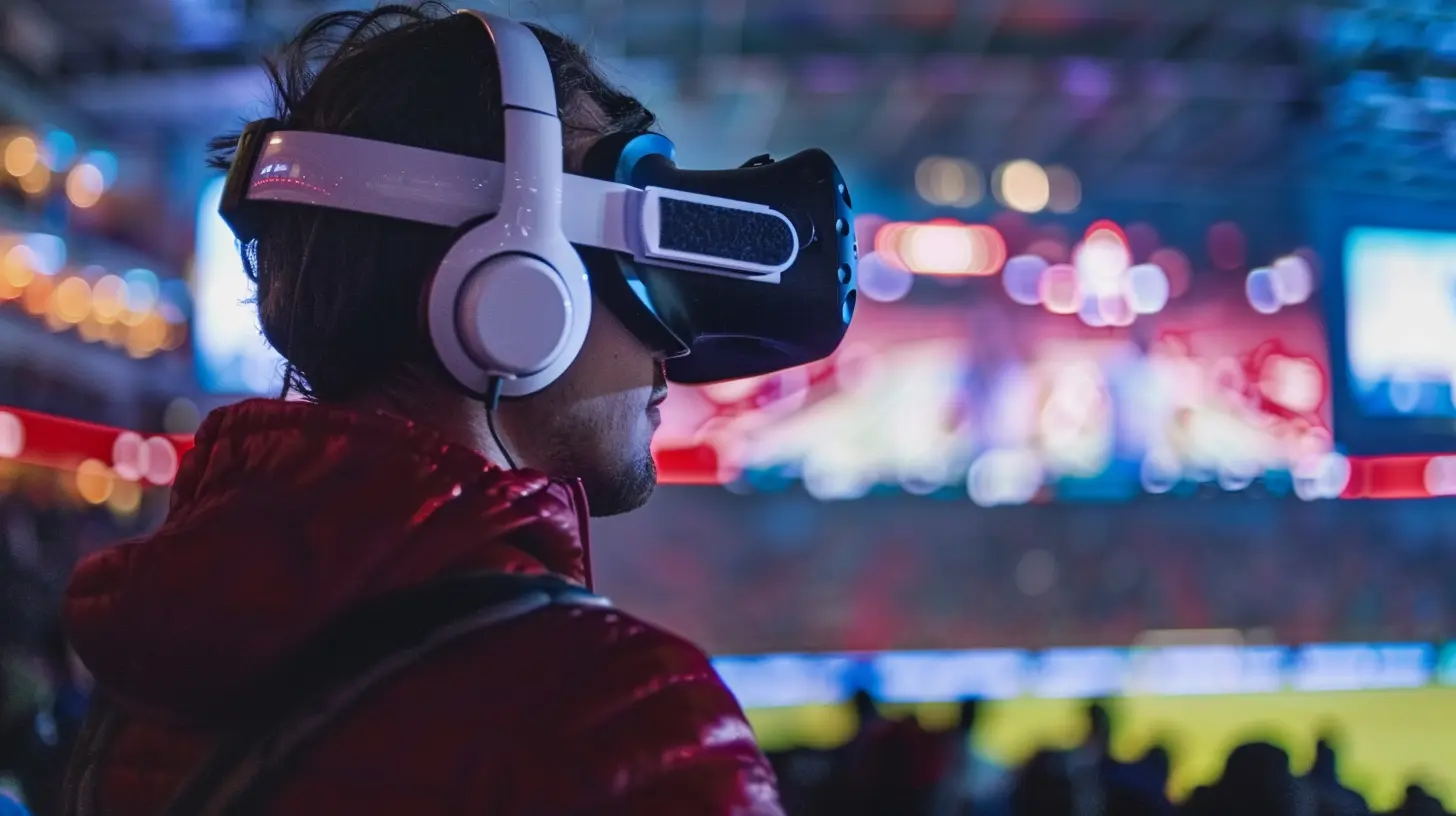How Virtual Reality is Changing the Way We Watch Sports
26 June 2025
Virtual Reality (VR) isn't just for gaming anymore. It's transforming industries left and right, and the world of sports is no exception. Imagine watching your favorite team play as if you're sitting courtside, all from the comfort of your living room. Sounds cool, right?
VR is revolutionizing how we experience sports, making it more immersive, interactive, and engaging. But how exactly is this futuristic tech changing the game? Let’s dive in.

The Rise of Virtual Reality in Sports
What is Virtual Reality?
Before we jump in, let’s break it down. VR is a digital technology that creates a simulated environment, allowing users to feel like they are physically present in a different place. This is achieved using VR headsets, motion tracking, and immersive audio.Why Sports and VR Are a Perfect Match
Sports has always been about experience. The roar of the crowd, the tension of a game-winning shot, and the thrill of being there—these are things that make live sports so exhilarating. VR brings that experience to fans, removing geographical barriers and making every seat feel like the best in the house.
How VR is Changing the Way We Watch Sports
1. Immersive Live Streaming – The Next Best Thing to Being There
Remember the days of watching games on a small TV screen? That’s becoming a thing of the past. With VR, you can watch live games as if you're actually in the stadium.Companies like NextVR and Oculus Venues are leading the way, broadcasting games in 360-degree VR. Fans can choose different viewing angles, from sitting courtside to floating above the field for a bird’s-eye view.
The best part? No long lines, overpriced stadium food, or annoying seat neighbors. Just pure, uninterrupted action.
2. Front-Row Seats Without the Hefty Price Tag
Let’s be real—good seats at major sporting events cost a fortune. Not everyone can afford to sit right by the field, but VR makes it possible.With VR sports streaming, fans can get VIP treatment at a fraction of the cost. You can sit in premium seats, watch from exclusive angles, and feel like you're part of the action—all while lounging in your pajamas.
3. Interactive Fan Experience – Be More Than Just a Spectator
Watching sports isn’t just about looking at a screen. It’s about feeling the energy, interacting with other fans, and staying engaged. VR takes that to a whole new level.- Virtual Fan Zones – Imagine high-fiving fellow fans from around the world in a virtual stadium. VR allows fans to interact in real-time, bringing back the social aspect of watching sports.
- Game Stats and Replays – VR can overlay real-time stats, player profiles, and instant replays, making sure you never miss a thing.
- Choose Your Perspective – Want to see the game from the quarterback’s POV? VR lets you switch perspectives and experience the action from multiple angles.
4. Bringing Back the Social Aspect of Watching Sports
One of the best things about sports is sharing the experience with friends and family. But what if your best friend lives on the other side of the world?VR brings people together in virtual watch parties. Platforms like Oculus Venues allow fans to watch games side by side in a shared virtual space. It’s like going to a sports bar—without the overpriced beer.
5. Training and Coaching – A Game-Changer for Athletes
VR isn’t just for fans—it’s a powerful tool for players too. Coaches and athletes are using VR to analyze plays, improve performance, and gain a competitive edge.- Visualization Training – Athletes can mentally rehearse plays, improving reaction time and decision-making.
- Virtual Practice Sessions – Teams can simulate game scenarios and practice strategies in a risk-free environment.
- Referee Training – Even referees are using VR to refine their decision-making skills. No more blaming bad calls on human error!
6. Esports and VR – The Future of Competitive Gaming
Sports isn’t just about traditional games anymore. Esports has skyrocketed in popularity, and VR is making it even more exciting.VR esports puts players inside the game, creating a fully interactive experience. Games like Echo VR and VR boxing tournaments are redefining what competitive gaming looks like.
7. AR & VR Mashup – The Best of Both Worlds
Augmented Reality (AR) and VR are merging to create an even richer sports experience. Imagine wearing AR glasses that display real-time stats while watching a live VR game. The combination of both technologies is taking sports entertainment to another level.
The Challenges of VR in Sports
Of course, no technology comes without hurdles. VR still faces some challenges before it becomes the go-to way to watch sports:- High Costs – VR headsets are getting cheaper, but they’re still not as accessible as regular TVs.
- Internet Speed – Streaming high-quality VR content requires strong internet connections. Lag or buffering can ruin the experience.
- Limited Content – While VR sports broadcasting is growing, not all leagues or events offer VR streaming yet.
Despite these challenges, VR is advancing rapidly, and more companies are investing in making it mainstream.

What Does the Future Hold for VR in Sports?
So, what’s next? As technology continues to improve, we can expect:- More Sports Leagues Adopting VR – The NBA, NFL, and FIFA are already experimenting with VR content, and it’s only going to expand.
- Enhanced VR Equipment – Lightweight, wireless headsets with ultra-high-definition displays will make VR more comfortable and immersive.
- Wider Accessibility – As VR becomes more affordable, more fans will get to experience sports like never before.
It won’t be long before VR becomes as common as watching games on TV. The idea of sitting in a virtual stadium could be the norm rather than an exclusive luxury.
Final Thoughts
Virtual Reality is revolutionizing the way we watch sports, breaking barriers and bringing fans closer to the action than ever before. Whether it’s immersive live streaming, interactive experiences, or game-changing training techniques, VR is here to stay.So, the next time you miss out on tickets to a big game, don’t sweat it—just grab a VR headset and enjoy front-row seats from home. The way we experience sports is changing, and honestly? It’s pretty epic.
all images in this post were generated using AI tools
Category:
Virtual RealityAuthor:

Jerry Graham
Discussion
rate this article
1 comments
Candice Myers
Virtual reality is revolutionizing sports viewing by immersing fans directly into the action, creating unparalleled experiences that enhance engagement and redefine how we enjoy live events.
July 12, 2025 at 3:35 AM

Jerry Graham
Absolutely! Virtual reality is transforming sports viewing by immersing fans in the action, offering unique experiences that elevate engagement and enjoyment of live events.


